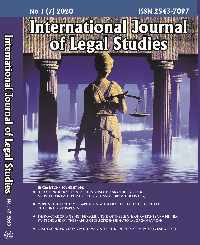MODELS OF SURROGACY REGARDING ESTABLISHMENT OF THE LEGAL PARENTHOOD OF THE INTENDED PARENTS
MODELS OF SURROGACY REGARDING ESTABLISHMENT OF THE LEGAL PARENTHOOD OF THE INTENDED PARENTS
Author(s): Lenka DufalovaSubject(s): Law, Constitution, Jurisprudence
Published by: Międzynarodowy Instytut Innowacji "Nauka - Edukacja - Rozwój"
Keywords: surrogacy; legal parenthood; models of surrogacy; ex ante, ex post; hybrid
Summary/Abstract: Today, surrogacy is becoming a more common method of procreation. Comparing to the adoption, surrogacy enables intended parents to become parents of the child genetically related to them. The existence of a genetic link between the child and the intended parents is one of the reasons surrogacy is becoming more popular than adoption. However, there are no rules at the international level governing surrogacy in general, or international surrogacy. Each country is free to set its own rules regarding surrogacy. Some countries ban surrogacy, others have explicit legislation allowing it. This legislation varies from state to state and it is creating different models of surrogacy. In the article, we have focused on the research of different models of surrogacy regarding the establishment of legal parenthood of the intended parents. Those models can be described as an ex-ante model, ex-post model, and hybrid model. Distinguishing criterion for our differentiation is whether the court´s or other state authority´s decision on legal parenthood of the intended parents is delivered before the conception, eventually the birth of the child, or after its birth. Paper evaluates how each model works and what are its cons and pros.
Journal: International Journal of Legal Studies (IJOLS)
- Issue Year: 7/2020
- Issue No: 1
- Page Range: 71-90
- Page Count: 20
- Language: English, Polish

